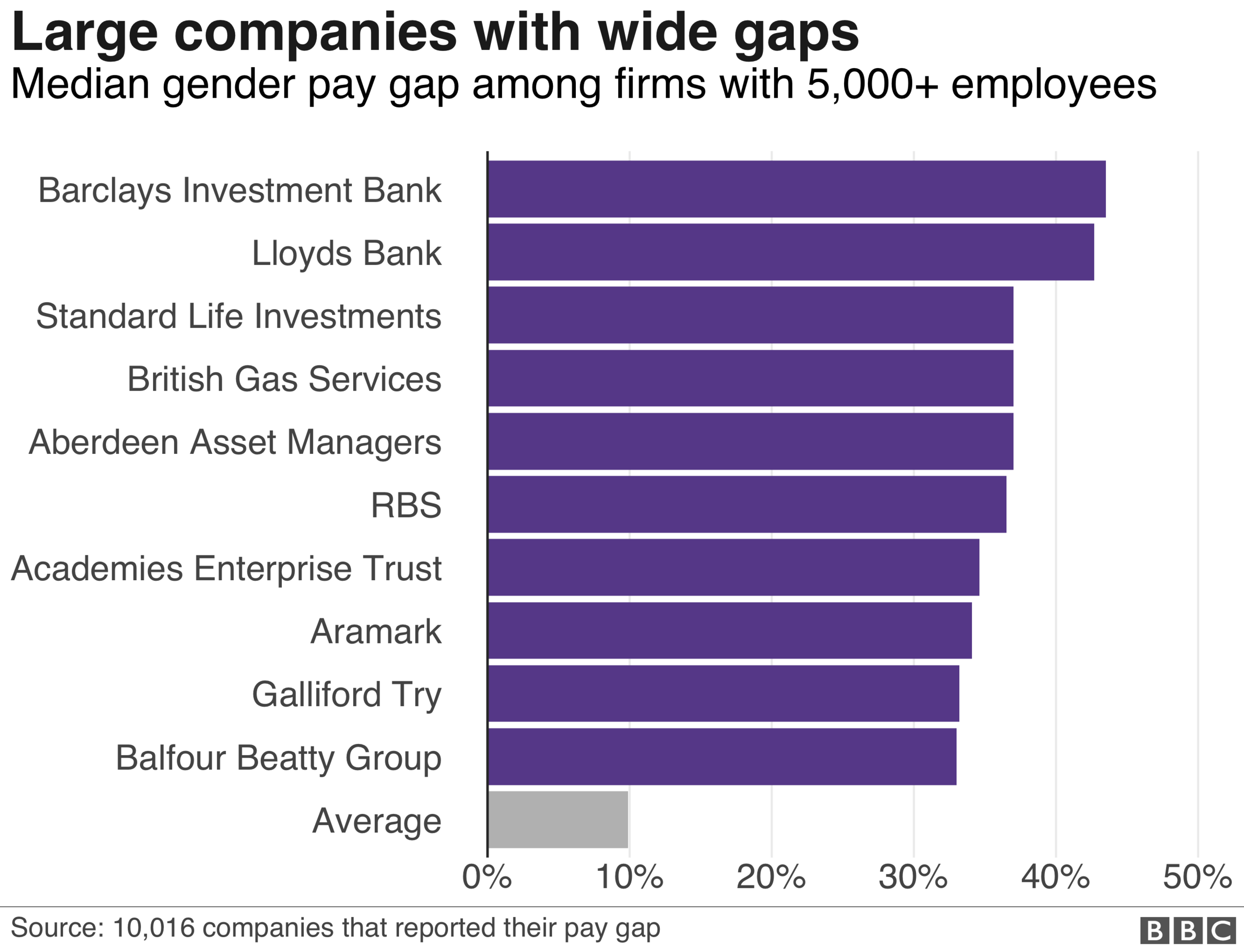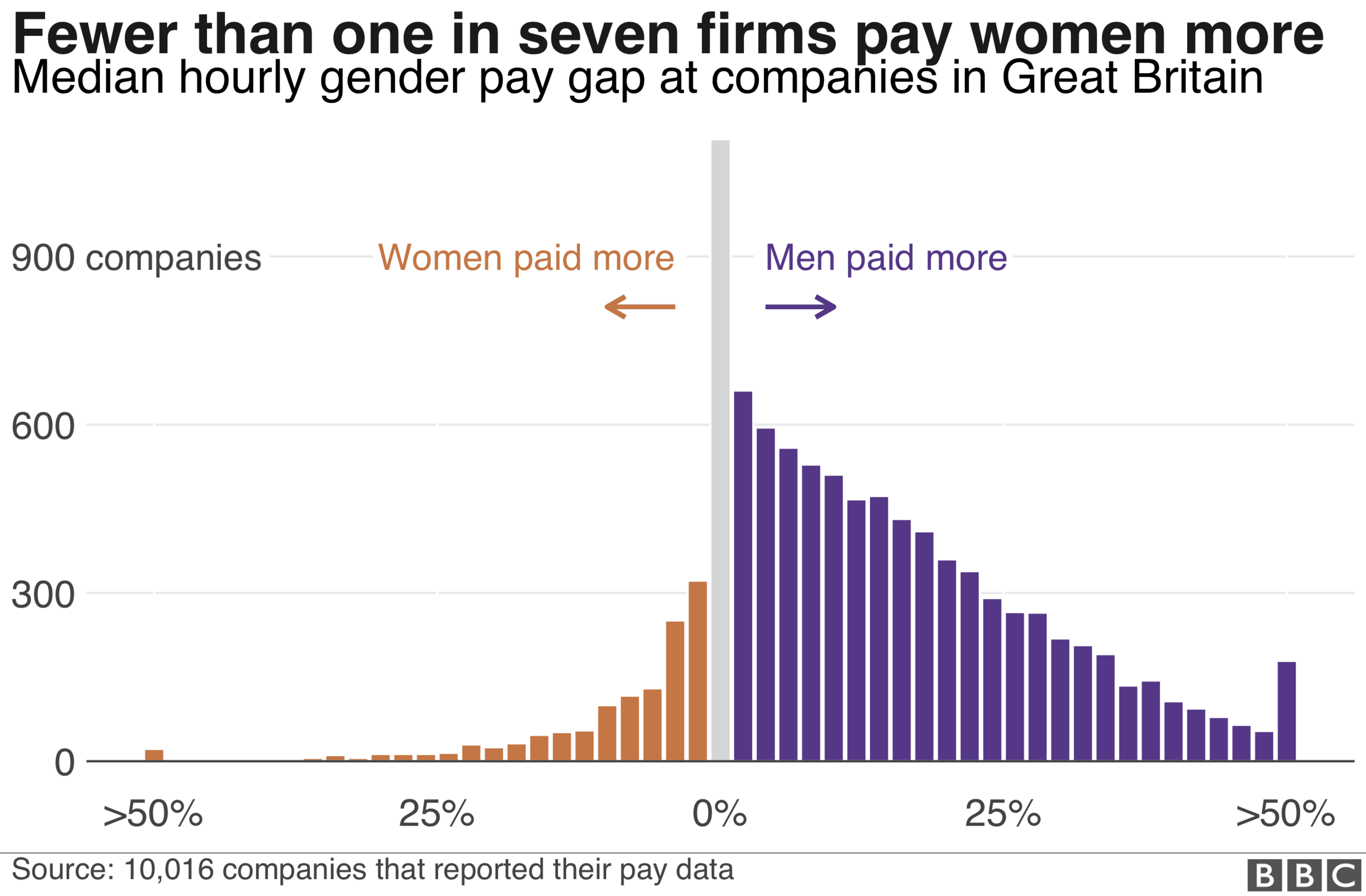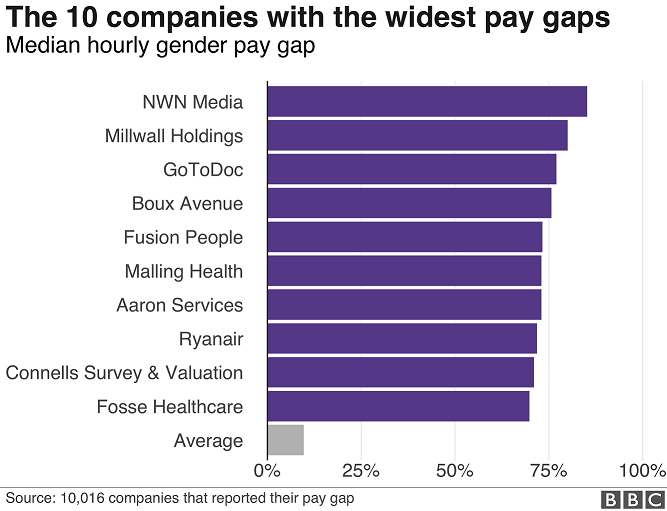1,500 companies miss gender pay deadline
- Published
Gender pay gap: What do women think?
More than 1,500 companies have failed to report their gender pay gap figures before Wednesday night's deadline.
The Equalities and Human Rights Commission said 1,557 firms had missed the deadline.
It will now contact these companies to remind them of their legal obligations.
The equalities watchdog will investigate those firms that fail to comply and could take legal action against them, with penalties including an unlimited fine.
All companies, charities and public sector bodies with more than 250 employees were required to submit their gender pay figures before Wednesday's deadline.
The EHRC will check whether those firms that failed to report fall into this category.
One organisation that missed the deadline was the Unite union, which belatedly published its figures on Thursday.
The union, which describes itself as being "at the forefront of the trade union campaign to achieve equal pay", revealed that its female employees' median hourly pay was 29.6% lower than what male workers are paid.
Want to find out the median gender pay gap at your company? Try the calculator below.
If you can't see the calculator, click here.
More than 10,000 firms have published data, with in excess of 1,000 firms reporting on the last day.
More than three-quarters of UK companies pay men more on average than women, BBC analysis of government figures suggests.
The median pay gap among those companies was 9.7%.
The figures indicate 78% of firms pay men more than women on average, while 14% pay women more.
This is based on the median measure, which is the level of pay that separates the top half of earners from the lower half.
In total, 8% said they had no pay gap between men and women.
The gender pay gap is not the same as having unequal pay, which would be against the law. By law, men and women with the same jobs have to be paid the same wages.
A gender pay gap can arise if there are more highly paid men than women in a company, or if women are deemed to be less experienced than their male counterparts, or if women take a hit to their salary after taking maternity leave.
In reporting gender pay, firms with more than 250 staff have to publish data on the average difference between male and female employees.



What action can be taken against firms that don't report?
Rebecca Hilsenrath, EHRC chief executive, said it was pleased with the rate of reporting, but added: "It is the law, it's not an option. It is the right thing to do, and we will be enforcing against all those organisations which failed to meet the deadline."
The EHRC will send letters to all of those organisations next week and they will then have 28 days to respond. Terms of reference will then be issued for the enforcement process, which will be made public.



She said the more important issue is what companies will do to address the pay gap: "We want them to look at their flexible working practices, we want to look at them tackling bias, conscious and unconscious, and we're looking to them to address instances of pregnancy and maternity pay discrimination."


Airline Ryanair was one of the companies reporting a large difference, with a 71.8% gender pay gap.
Boux Avenue, the lingerie firm owned by Dragons' Den star Theo Paphitis, reported a median hourly pay gap of 75.7%, while fashion retailer Karen Millen had a gap of 49%.
High Street brands Costa, KFC, Matalan, McDonald's, Primark and Starbucks reported no difference in what they paid their female and male staff.



Some firms reported so-called "negative" pay gaps, where women are paid on average more than men. These included electric car maker Tesla Motors, babywear retailer Mamas and Papas and electronics retailer Richer Sounds.
Some have said reporting the pay gap is crude and open to misinterpretation, but gender equality campaigning charity the Fawcett Society said it is an opportunity for employees to talk about pay and find out what their colleagues earn.
Want to learn more about the gender gap? Try asking our bot below.
Calculating the pay gap
The median pay gap among the 10,000 companies with more than 250 employees that have reported figures in the government's pay portal is 9.7%.
But according to the Office of National Statistics the UK's median gender pay gap is 18.4%.
Why is there a difference between the figures? The ONS figure is based on its annual survey of hours and earnings, and that includes both full and part-time workers, and covers all employers.
Individual company data has been reported by companies to the Government Equalities Office. All gender pay gap figures in this article reflect the hourly median pay gap for all employees. The national and sector gender pay gap figures come from the 2017 ONS ASHE survey.
Calculator design and development: Evisa Terziu and Sumi Senthinathan
Data journalism: Will Dahlgreen, Ransome Mpini, Daniele Palumbo and Clara Guibourg
- Published4 April 2018

- Published21 March 2018

- Published21 February 2018

- Published3 April 2018

